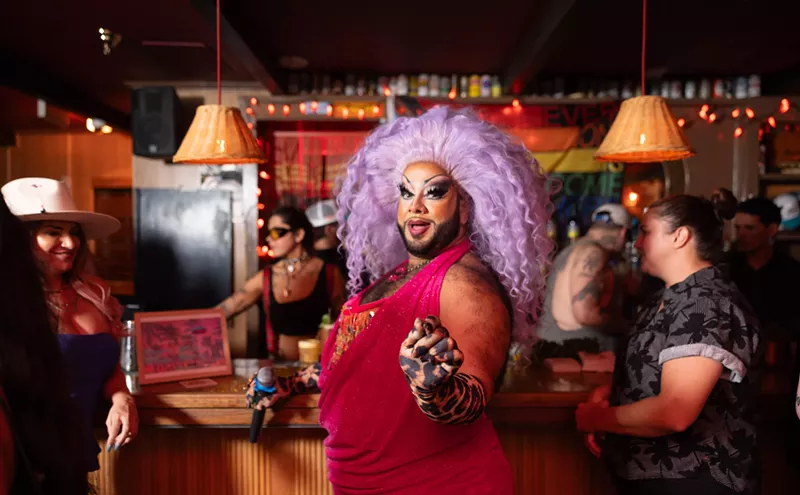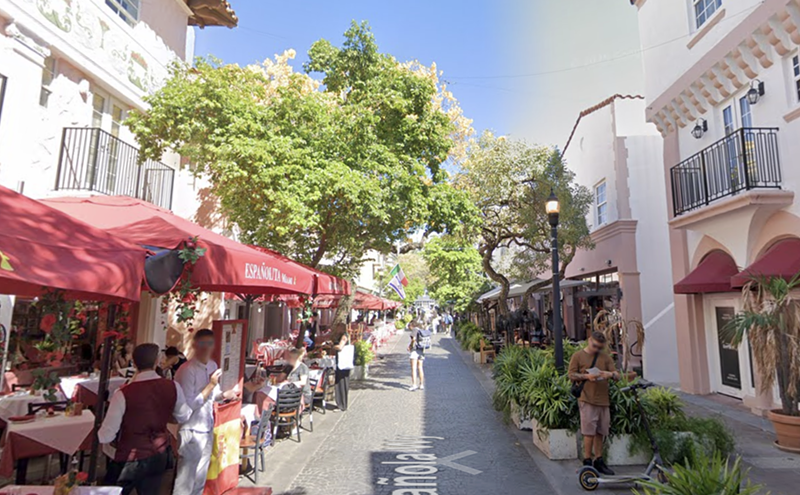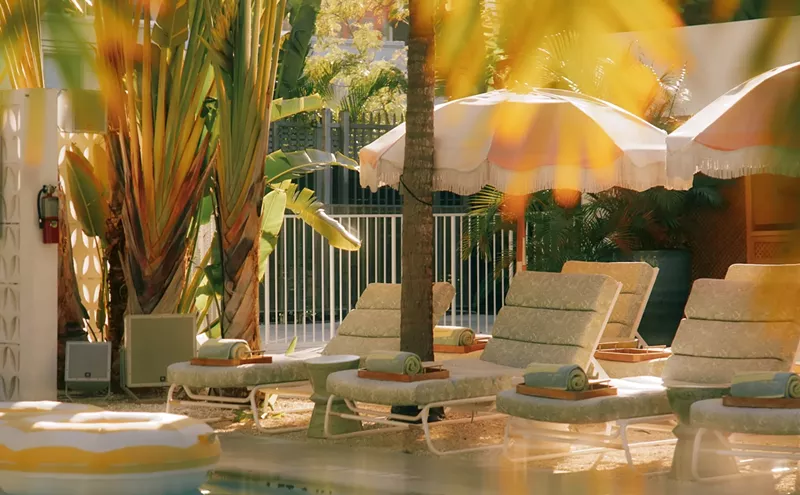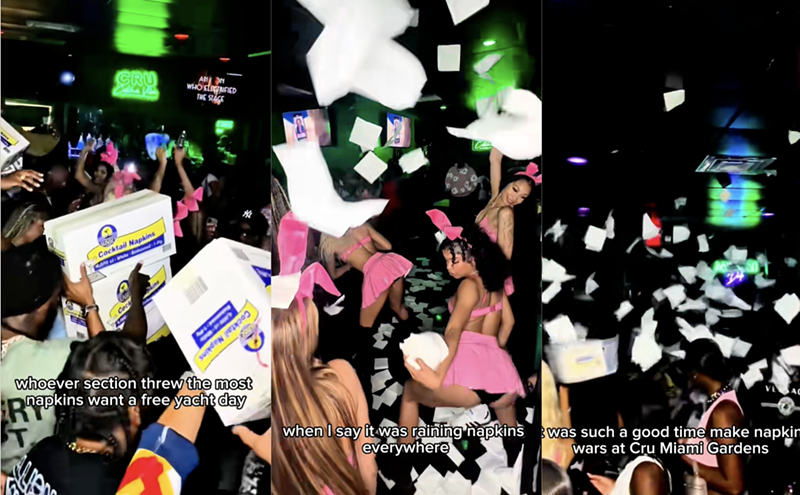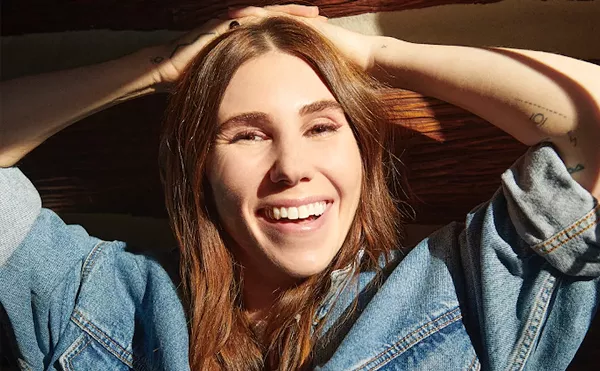The show centers on cracker culture, one that has influenced Florida history and its customs for more than two centuries. Of Irish and Scottish ancestry, the crackers illegally migrated from Anglo-Saxon Georgia and South Carolina to settle in Florida -- at the time, the property of Spain -- in search of the freedom that would allow them to become more self-sufficient.
Kahn, a Miami native, has studied cracker culture since 1999 in an effort to understand, as she puts it: "My own nomadic and urban lifestyle." After receiving funding from the Florida Humanities Council, the artist began documenting her research about cracker gatherings and practices.
Once she'd begun, Kahn found attaining her goal perplexing. In the show's catalogue she says, "I found that the more time I spend making photographs and videos, the more elusive and slippery terms like 'cracker' and 'native' become." The roots of her inquiry are embedded in the literature of discovery and exploration, whose long history dates from sixteenth-century chronicles (in which natives were simultaneously redeemed and ridiculed), to Rousseau's romantic idea of the noble sauvage, to twentieth-century anthropological relativism.
Today the consensus suggests it's possible to understand a culture different from ours, provided one is willing to become immersed in that milieu. This is what Kahn did, although after a while she acknowledged her aim was "not to define the culture, but rather to suggest the camouflaged humanity beyond the stereotypes."
The artist's photos are indeed in sync with the crackers' way of life. In Tombstone we perceive two graves, their marble headstones at eye level. The one closest to the camera has the name Brooks etched over the image of an alligator positioned next to a gas tank on wheels, a symbol of the cracker lifestyle. Mudhole shows a group of youngsters frolicking in mud close to a palm tree bordering a lake. Their behavior truly evinces a candid absorption in the moment; they're almost oblivious to Kahn's camera.
During the opening reception, Caren Rabbino moderated a panel discussion that included professor of history at Florida Southern College James M. Denham, professor of journalism at Stillman College Bill Maxwell, radio commentator and author Diane Roberts, and Florida cattlewoman Iris Wall.
Roberts attributed the success of Kahn's photos to the comfortable behavior demonstrated by her subjects. The author drew a comparison between a photo of a dead hog and the environment in which crackers are immersed daily. Living off the land, rural people develop a meaningful relationship with animals; they become a food staple and a cultural symbol.
Denham talked about the intergenerational phenomenon of cracker culture exemplified by a photo depicting a little girl dressed in camouflage, sitting on a pliable chair, enjoying a sunny day. In this instance the outfit becomes a token through which generations transmit values.
Rabbino steered the panel to explore the semantics behind the word cracker and to discuss how it's linked to more pejorative ethnic slurs such as white trash and redneck. Wall defended the term cracker as a meaningful cultural symbol that conveys a proud, honest, and self-sufficient people in intimate contact with the land. Roberts added that white trash is a term with which any cracker (or white for that matter) can be labeled, whereas redneck might simply refer to a happy-go-lucky, sloppy person.
In agreement with Wall's assessment, Maxwell, an African-American journalist, deemed crackers to be straightforward, hardworking people. Considering the South's history of slavery, I believed he was in a good position to demystify the pejorative meaning associated with the term.
After this panel discussion, the crowd walked to Montse Guillén and Antoni Miralda's TransEAT to savor treats such as swamp cabbage, turtle stew, fried gator-tail tidbits, roasted pork sirloin, buttermilk cheese-biscuits, and other delicacies, all of which were prepared and served by Florida crackers. The mood was relaxed and cheerful.
The food tasting provided a nice culmination to the evening, a moment in which everyone actually felt the import of Kahn's project through a shared and nurturing experience.
"AT THIS TIME, 10 Miami Artists" opened with a big buzz at Donald and Mera Rubell's newly remodeled warehouse. The exhibit showcases works by Hernan Bas, José Bedia, Cooper, Naomi Fisher, Mark Handforth, Jiae Hwang, Cristina Lei Rodriguez, Bert Rodriguez, Purvis Young, and Pablo Cano.
Curator Mark Coetzee created a dynamic interaction among the pieces; instead of following the tradition of hanging each artist's works separately, he mixed them. The public can move from the awe-inspiring -- José Bedia's raft installation that occupied a whole nave on the first floor -- to the bizarre -- Cooper's cryptic and angst-ridden Our American Cousin assemblage.
On the second level is Purvis Young's room, in which dozens of his works are hung salon style, a fine touch by Coetzee, who sought to evoke the gestures of a piece Young produced in the Seventies displayed in Overtown's Goodbread Alley.
This exhibition identifies the common threads among established and emerging Miami artists. Bas's The Aesthete's Toy -- depicting a carapace filled with trinkets that sits on a Persian rug, above which hang three lamps -- was a well-suited homage to French author Karl Huysmans.
Conceptually closer to Bas was Cristina Lei Rodriguez's commemorative installation -- cinder blocks, a pole, a fence, bird toys, and flora topped with a tiny sailboat. I found Mark Handforth's bike (filled with colored candles) to be a poetic statement, akin to something from Roger Corman's The Wild Angel.
In addition there was Bert Rodriguez's cleverly framed series of identical self-portrait photographs in which he poses as an executive-like model (Rodriguez is truly a Miami Duchamp). Naomi Fisher offered some of her color-saturated -- and visually enticing -- series, Assy Flora; while Jiae Hwang (the youngest of the bunch) displayed a collection of pencil drawings titled I'm the Real Princess of the Magical Land -- delicate, witty, and humorous.
Coetzee points out some recurring images connecting the artists, such as a boat that appears in different guises throughout works by Bedia, Bas, Lei Rodriguez, and Young -- perhaps symbolizing an epic journey each has endured. The altar is another symbol present in the works of Handforth, Lei Rodriguez, and even Fisher, with her self-portraits displayed as mounds of flora. Then there's the horse -- seen in Young's paintings, Cooper's works, and Bedia's assemblages.
Miami and its art scene are relatively young, and with an eye on the future, one easily understands why shows like this are needed: They bring to light historic points of reference for tomorrow's artists and historians.
Boasting a newly refurbished art house in addition to legendary art holdings, the Rubell Family Collection is one of America's best (privately owned) contemporary venues. Its current exhibit suggests, beyond its themes, that Miami artists are internationally respected.



